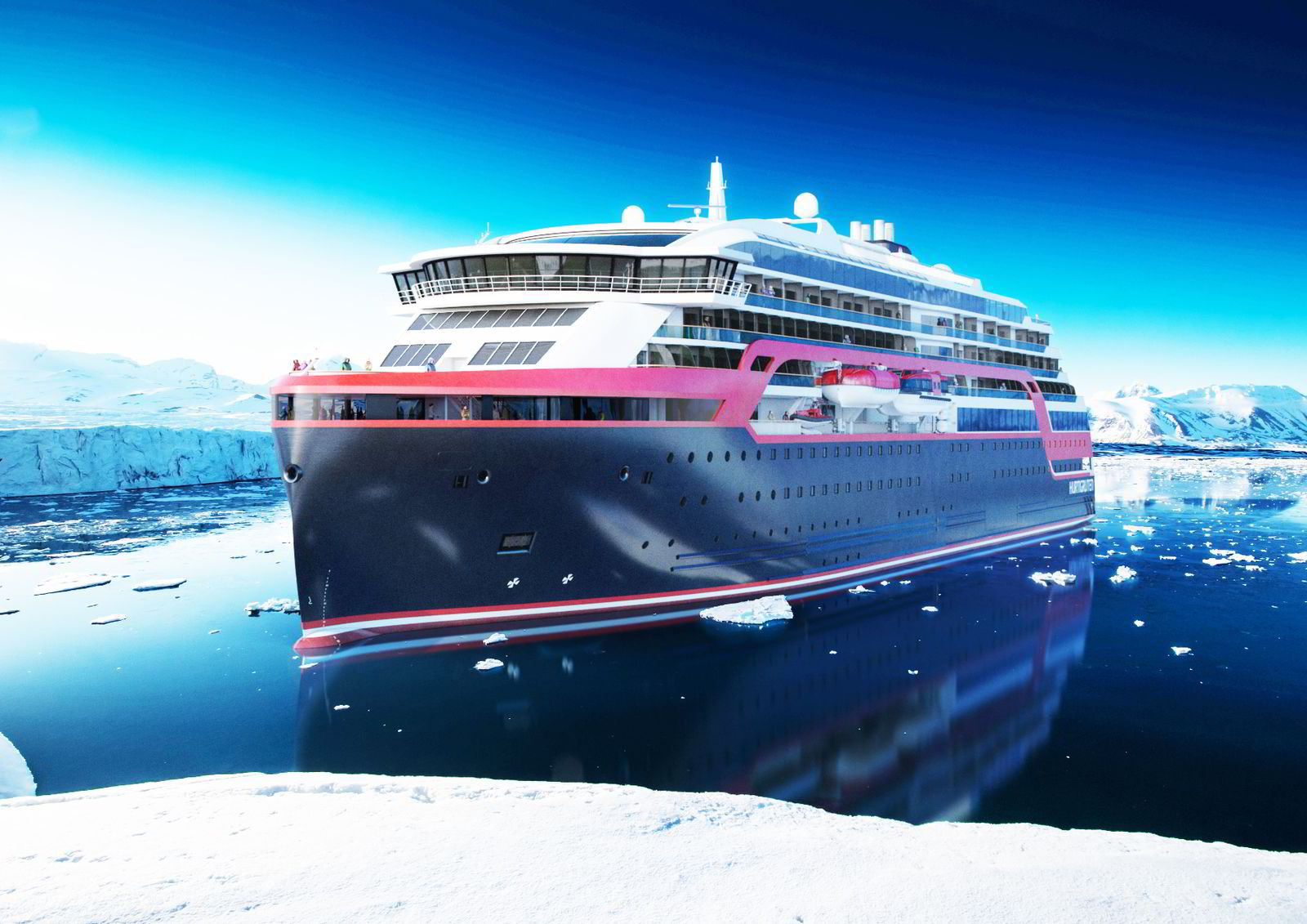As Hurtigruten builds the world’s first hybrid-power cruiseships, the Norwegian shipowner is also laying the groundwork to boost their ability to run on battery power.
Chief executive Daniel Skjeldam says the 600-passenger expedition cruise duo ordered at Kleven Verft in Ulsteinvik, west Norway, will have space for much larger battery packs in the future.
“What we are trying to do is build these ships for the future,” he said.
Skjeldam believes the price of battery power will drop significantly, and that trend has begun already. As the technology improves, the expanded capacity will soon allow the vessels to run on pure battery power for longer.
Sensitive natural settings
That will reduce their environmental footprint and enhance the passenger experience in the sensitive natural settings where the expedition vessels will travel.
“Our customers are preoccupied with sustainable operators,” Skjeldam said. “And of course, if we can extend the period of time that we can travel emissions-free and noise-free, that’s going to be a pretty marvellous experience.”
Kleven started construction last month on the first of the expedition ships, which are due for delivery in 2018 and 2019.
Hurtigruten — which is best known for running ferries and cruiseships along the Norwegian coast but which also has cruises to other destinations in Europe, South America, eastern Canada, Greenland and Antarctica — has options for two more of the hybrid newbuildings.
“We are operating in the world’s most sensitive environment, so we want to have ships that really push the boundaries on sustain-ability,” Skjeldam said. “We want the entire shipping sector to go in that direction.”
Hurtigruten has been arguing that the entire Arctic should be free of heavy fuel oils, and Skjeldam says it is showing its commitment through actions like this order.
The newbuildings, Roald Amundsen and Fridtjof Nansen, will be able to run on battery power alone for up to 30 minutes.
More importantly, although they will primarily run on diesel, the battery power leads to an estimated 20% decrease in fuel consumption and emissions.
Just as in hybrid cars, the batteries play a peak-shaving role, absorbing excess energy when it is not needed and using it when more power is required.
Market sources say other cruiseship owners, including major cruise lines, are exploring battery hybrid technology for their newbuildings.
Jean-Jacques Juenet, business development manager for passengerships and ferries at class society Bureau Veritas, says the benefits vary, depending on size.
For smaller and medium-size passengerships, battery power allows a vessel to enter port without using an engine. For large cruiseships, the battery can help prevent the need to fire up an extra generator while manoeuvring in port.
Juenet says shipping expects the same kind of evolution in battery technology that has been seen in the automotive industry.
“The whole industry is confident that there will be improvement in the future relatively quickly,” he said.
Skjeldam says hybrid power is a proven technology at this stage, with hybrid and battery ferries already operating in the Norwegian ferry sector. Hurtigruten is taking it into a new sector.
He thinks the technology will spread: “We need to take some huge steps in this industry. We need to think new. We need to innovate. We need to be at the forefront of the development of this.”




